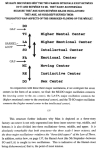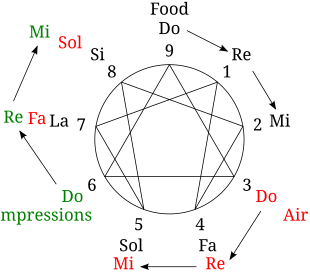Buddy
The Living Force
monotonic said:Some observations on negative resistance:
1: Ordinarily damped systems become undamped with the introduction of negative resistance. Resonators vibrate when exposed to it.
2: Growing oscillations are caused by negative resistance. Decaying oscillations are caused by positive resistance.
3: Negative resistance is always to blame when a small disturbance has a large result.
An interesting question is, based on these examples, what is the reaction most people have when they encounter negative resistance in life? How do they feel, and what are things that have made you feel this way? This way we may come up with concrete examples of negative resistance acting in our lives. We may then identify the structures and forces involved in these circumstances.
After spending some time investigating a bit - from researching the inner workings of different kinds of clocks, to scanning ahead of chapter 7 in ISOTM, it occurs to me to ask:
Have you made it through chapter nine of ISOTM yet; specifically the portion of the chapter following the 'diagram of the universe' lecture? This part of the chapter deals with 'three-story man', the different categories of 'food' and a part of the context of this topic that I left out when excerpting from Cosmic Secrets. For example, that part which relates to "three octaves of radiations between four points" which seems to be another important concept to grasp as it relates to the octaves and three forces teaching.
I ask, because since parts of Cosmic Secrets are coming across as a bit more hypothetical than G's own words, excerpts of that material might be more distracting to this discussion. In ISOTM, G may provide better references to "structures and forces" that meet your requirements, but I'm not sure.
With regard to the specific observations on negative resistance and in particular your number three, I wonder if you are thinking of this topic in terms of "a balanced state" being the optimum or highest value of a system. The way you phrased the statement using "blame" is what makes me wonder.
In any case, the question is bringing to mind all kinds of concepts from sociology ("tipping points", see Malcolm Gladwell in a book by the same name) to personal experiences as a kid growing up in public school.
Related to the latter, considering the structure of a typical classroom setting with all its conformity requirements and considering the form or role of 'student' that my personal restraint takes, I see myself as barely containing or holding back a certain magnitude of energy. With a small input such as the sound of a bell or the teachers permission to end the class, the "restrained student" structure breaks and I feel like a bird that's been un-caged to spread his wings and fly away. Or, maybe like that child at recess who runs out of the building, beating the rest of the kids to the playground and behaves as though he needs to be occupying all the playground equipment at the same time.
On the other hand, there is the fact that the very act of creating and occupying a role as "good student" forces me, several times every day, to contain my energy in this role as I go from one period to the next, feeling a building depression I sometimes describe as involuntarily teaching myself a sort of learned helplessness in the face of 'authority.' It seems to me that this is definitely a structure worth breaking.
Well, that's a couple of ways to look at this experience and I'm clueless as to how close I am to what you're looking for so at this point I'm interested in your thoughts about what's been posted since your last reply.


